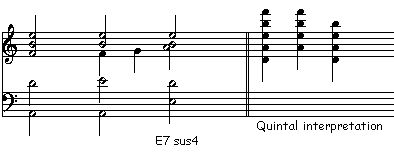Answer: This could require a cup of coffee. Maybe the piece was not made to be analyzed, but I'd say the composer has written a quintal harmony: a final chord built on fifths instead of thirds: D - A - E - B. And it's in a quintal version of 2nd inversion. If you look at it that way, the penultimate chord is a quintal dominant, making a quintal translation of V - I: A-E-B-F (the upper fifth being diminished), then D-A-E-B.

I don't really believe in quintal harmony, though. That is, while I know some have thought that one might just substitute fifths for thirds as the basis of harmony, a substitution like that doesn't really work in the same way that triadic harmony does. Triadic harmony is not arbitrary; it was as much discovered as it was invented. Triadic harmony derives from the overtone series; we all have heard triadic harmony and tend to mentally fill in a missing third in a sounding fifth. What you end up with in quintal/quartal harmony is something that sounds like triadic harmony with unresolved suspensions.
Which can sound pretty good! But it can't sound resolved; it leaves you with a question. In this case, since the E is the bass of the final chord and "inversion" of a quintal chord really isn't going to work for the listener, I think it will be perceived as an E7 sus 4. Maybe that's what counts. And with A as the bass of the previous two chords, one could even see this conclusion as a sort of plagal cadence, an "amen" cadence of IV- I.

